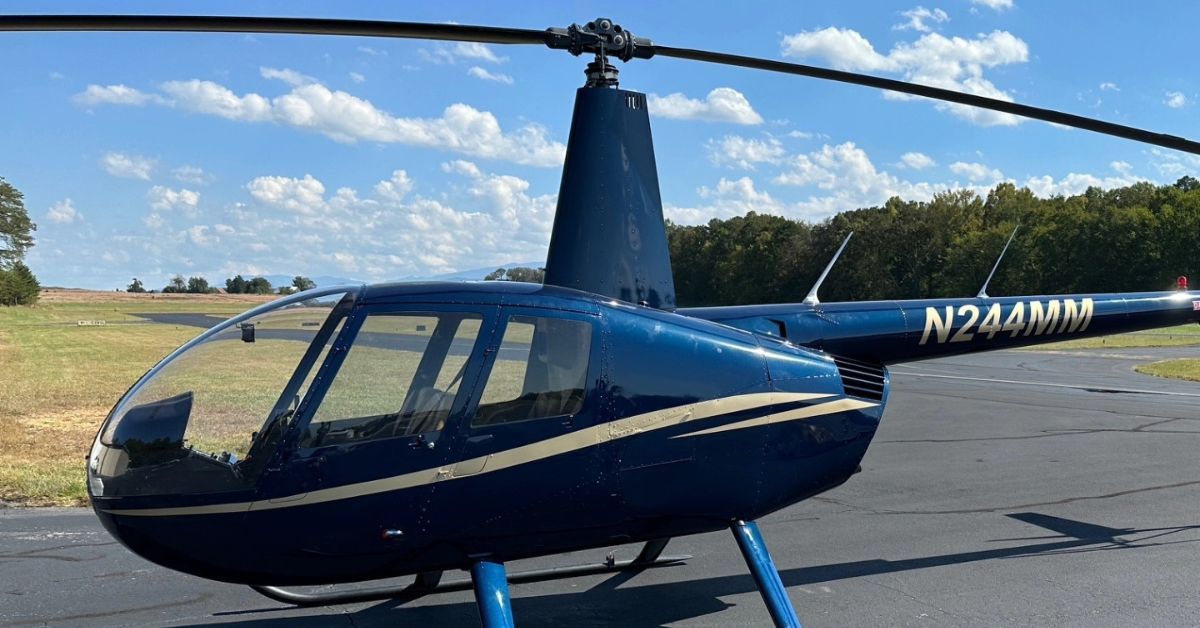How Helicopter Pilots Train for Emergency Landings
Emergency landing training is vital in helicopter pilot education. From the moment students step into the cockpit, flight instructors train them to expect the unexpected. Unlike fixed-wing aircraft, helicopters require a precise, specialized approach during emergencies due to their unique flight dynamics. Rigorous training equips pilots to face these challenges confidently, relying on their skills and the advanced technology they operate.
An essential part of any pilot’s development is learning how helicopter pilots train for emergency landings and having a thorough understanding of the aircraft, precise maneuvering, and intensive practice in simulated scenarios. Pilots are not just taught theory; they endure hands-on sessions that replicate high-pressure circumstances to ensure they accurately and quickly respond.
Understanding Helicopter Emergencies
A helicopter, while versatile and capable of impressive feats of maneuverability, comes with its own set of risks. Mechanical failures, such as engine troubles or rotor malfunctions, can occur during flight, and weather-induced challenges, such as high winds or sudden visibility loss, add to the unpredictability. Pilots must tailor their response to each emergency and adjust their approach to every possible situation.
The primary focus of helicopter emergency training is to develop quick decision-making skills. Instructors teach pilots to assess the situation within seconds, identify a landing area, and execute an autorotation. This technique utilizes the unpowered rotation of the rotor blades to mitigate the impact of a landing in the event of engine failure. The precision required for such maneuvers is immense, making comprehensive training crucial.
The Role of Simulations
Simulated training environments provide an invaluable resource for aspiring helicopter pilots. While theoretical knowledge forms the foundation, simulations enable pilots to apply that knowledge in a practical setting without incurring real-world risks. Emergency landing training simulations replicate real-life conditions, ranging from mechanical failures to sudden loss of altitude. Flight schools design training tools to reflect actual flying conditions and challenge pilots to respond as they would in the air.
During simulations, pilots hone their ability to manage multiple factors simultaneously. They practice adjusting the collective pitch, making quick decisions about where to land, and positioning the helicopter for the safest possible touchdown. Pilots gain the confidence and muscle memory needed for real emergencies by repeating drills under simulated conditions.
Mastering Autorotation Techniques
The mastery of autorotation lies at the heart of emergency landing training. This technique saves lives and transforms potential disasters into manageable challenges. Autorotation enables the helicopter’s rotor system to continue spinning after losing engine power, utilizing energy from the downward airflow. Pilots must focus on balancing the collective control and the cyclic stick to achieve the optimal rate of descent and glide path.
The transition into autorotation must be seamless, as hesitation can compromise the maneuver’s success. Helicopter flight instructors work closely with students to ensure they understand every nuance of this critical technique. Frequently practicing autorotation under varied conditions is paramount to building the skill set necessary for effective emergency landings.

Decision-Making in High-Stress Situations
Emergency landings test more than technical flying skills; they test the pilot’s mental resilience. Often, the ability to stay calm and collected under high-pressure scenarios determines the outcome. Helicopter flight training places a significant emphasis on building this mental toughness.
Instructors teach students to break down their priorities into key steps in the event of an emergency. First, stabilize the aircraft. Next, troubleshoot the issue. Finally, focus on locating a suitable landing area and executing the emergency procedure. Repeated exposure to simulated crises creates a structured approach, ensuring a consistent response regardless of the situation’s complexity.
The Importance of Ground Training
While much of the focus falls on flight practice, ground training is no less important. Pilots must comprehend the mechanics behind their aircraft. This comprehension must include understanding the engine, rotors, and all systems that keep a helicopter aloft. Knowledge of these systems enables pilots to identify potential issues before they escalate and enhances their ability to troubleshoot in flight.
Often, ground instruction includes analysis of past incidents, further enriching the learning experience. Students review case studies and learn how trained pilots successfully handled emergencies, drawing lessons applicable to their future flights. A well-rounded curriculum that balances ground education with practical flight training solidifies a pilot’s preparation.
Learning from Actual Case Studies
Real-life incidents serve as some of the most impactful learning experiences in emergency training. Case studies provide unique insights into the challenges pilots have faced, offering a lens into their decision-making processes. Reviewing these scenarios enables student pilots to understand better the consequences of correct and incorrect actions during emergencies.
For example, a pilot experiencing rotor failure over a congested area may have seconds to determine a safe flight path and execute an autorotation. Students can mentally rehearse their actions by examining case studies of similar events, providing a sturdy framework to rely on in potential emergencies.
The Role of Instructor Oversight
No emergency training program is effective without expert guidance. Flight schools rely on seasoned helicopter instructors to shape the skills and confidence of their students. These professionals bring years of real-world experience into the training environment, ensuring that students learn from the best.
Trainers at a helicopter flight school like Arapahoe Flight School can create a comfortable environment where students can ask questions and make mistakes within the safety of controlled simulations. Their mentorship provides the scaffolding required to foster technical expertise and practical problem-solving skills.
Advanced Technology in Training
The inclusion of advanced technology elevates the standard of emergency training. Modern cockpit simulators with realistic controls and visuals, allow pilots to interact with a nearly identical replica of their helicopter. Immersive virtual reality tools also enhance the learning process, offering detailed experiences in a risk-free setting.
Flight schools integrate technological advancements into their curriculum to prepare students for the cutting-edge equipment they use in professional settings. This advantage enhances their ability to adapt in emergencies, contributing significantly to their safety and success.
Regular Refreshers and Recertifications
Even seasoned pilots benefit from revisiting emergency landing training. Flight schools encourage regular refresher courses and recertifications to reinforce existing skills and integrate new methodologies. Often, these sessions highlight updates in regulations, technology, and best practices, bridging the gap between initial training and ongoing expertise.
Helicopter pilots who train for emergency landings remain committed to continuing education and strengthening their ability to respond under pressure. Regular practice fosters a deep familiarity with emergency protocols, ensuring that every skill remains sharp and effective.

Building Confidence Through Repetition
Training programs prioritize consistent practice, knowing that muscle memory and skill refinement only improve through frequent drills. Experienced flight instructors understand that the ability to react quickly and correctly in emergencies stems from the combination of theory, practice, and mental resilience.
Emergency landing training transforms theoretical concepts into ingrained habits. Repeated exposure to potential challenges prepares pilots with the assurance they need to operate aircraft safely under any circumstances.
Preparing for Uncertainty
Becoming a skilled helicopter pilot is as much about responding to unexpected challenges as it is about mastering smooth takeoffs. Emergency landing training forms the backbone of this preparation, equipping aviators with the skills they need to protect themselves, their crew, and their passengers. Aspiring pilots lay the groundwork for a successful, safety-focused career by investing in comprehensive training.
Navigating the skies involves more than just technical skill. It requires unwavering confidence, precise execution, and the ability to manage extraordinary circumstances. With the right education, pilots can approach every flight prepared for anything that comes their way.
